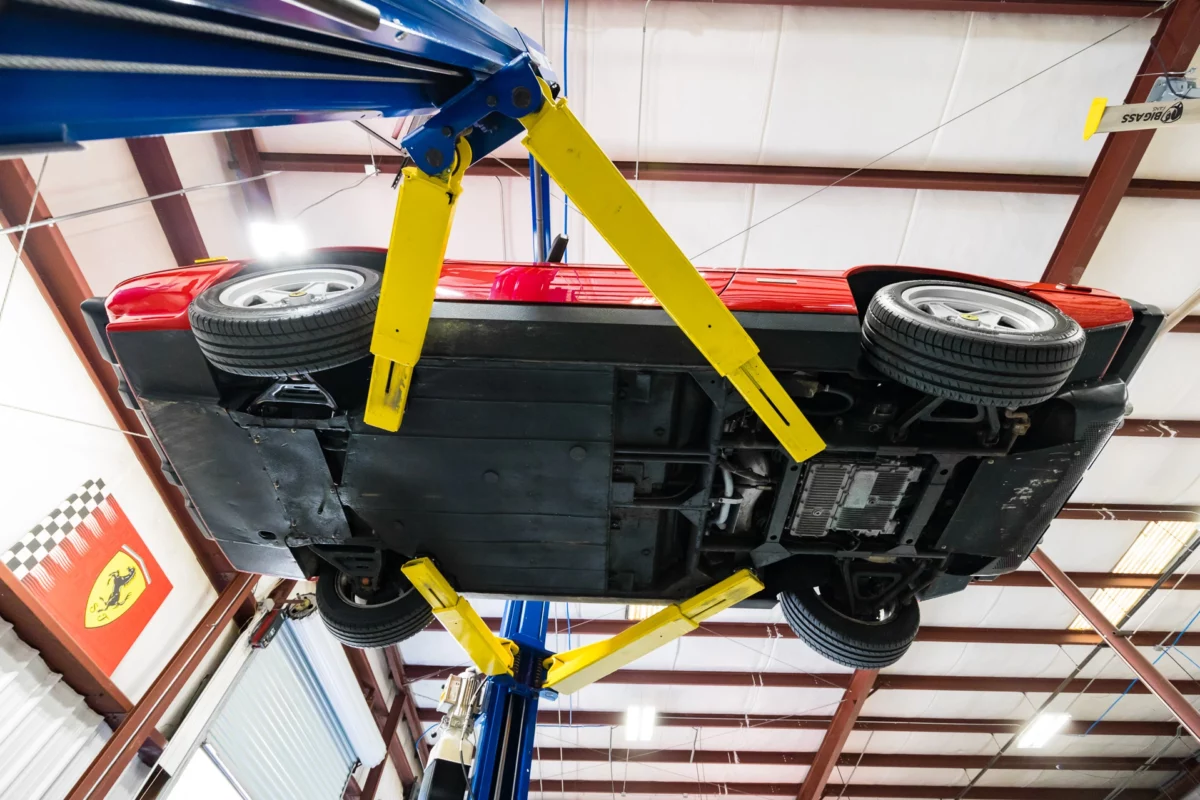Check out the Merlin Auto Group blog. Learn more about Ferrari timing belt replacement, and why it is so important to some models of Ferrari automobiles.
As an exotic vehicle with an emphasis on performance, Ferraris rely on precision. The slightest deviation in structural integrity and/or assembly can result in catastrophic failures – extremely costly failures, we should add.
One critical area of a Ferrari engine is timing. Ferrari timing belts are notorious among owners as a trouble area – one that demands regular servicing on a more frequent basis than your standard vehicle.
Let's explore the nuances and costs of Ferrari timing belt replacement service.
What is a Timing Belt?
Having a mechanically sound mind is not a necessity for the majority of car owners. Every morning they can get into their cars, commute, and pay no mind of mechanics until the check engine light comes on.
Most Ferrari owners like you have a different mindset, though. To own and operate these exotics, you naturally appreciate and understand the fundamentals of the maintenance.
The timing belt of your Ferrari is what links together the operation of the engine’s valves and pistons. As the crankshaft rotates, the pistons cycle up and down within the cylinder. To optimally function, the cycle of the camshafts must be in proper alignment to open and close the valves at the right time.
This is a mechanical linkage between the crankshaft and camshaft, and with a Ferrari or any vehicle really, the timing of the valve operation is critical to engine performance and longevity. In most cases, manufacturers suggest servicing the timing belt or chain every 60,000-100,000 miles.
With a Ferrari, precision is paramount, and the slightest deviation can easily lead to engine failure. This is why it’s suggested a timing belt service is recommended every 3-5 years for a majority of Ferrari models.
The Difference
A timing belt service on a Ferrari can vary on cost depending on the model, but typically this type of significant maintenance rarely dips below $3,200. When a new timing belt is installed on your commuter Camry or other everyday cars, the bill barely rises above $1,200. The reason is because those cars are built for the day-to-day – not the performance mindset naturally embedded in every Ferrari owner.
Ferraris are reliant on precision, and this is a major contributor to the more expensive costs. Not only that, this is an area where nuances and quarks are subjective to each particular model. Regardless of engine displacement and design, each individual Ferrari model will be assembled in its own particular configuration.
Every element will need to be disassembled, handled, and reassembled not only with care but exactly how the Ferrari intended. The steps taken in the procedure vary greatly from that of a typical street car as well.
A Particular Process
Ferraris differ from typical cars in many ways. Why? Because a Ferrari is not your typical automobile. They are intended for a particular life, and this particular life often presents itself with in-depth and high-frequency services. Ferrari designers have taken the time to make these services as easy as possible.
In the case of timing belts, you will often find that most street cars have an internal timing belt hidden behind the water pump and timing cover, which will require gaskets and front engine seals to be replaced upon service. With a Ferrari, the timing belt is often externally mounted on the engine, which does make life easier on the technician in at least one area.
If you take a look at the 360 Modena with a mid-mounted engine, the process is vastly different from a standard road car; the placement of the engine doesn’t allow for the standard service. Ferrari configures these models from the factory with access points for servicing the timing belt. But these points are located below the vehicle and behind the driver and passenger seat. To gain entry to these access points, not only will the car need to be on a lift, but the seats will need to be removed as well.
Engine placement is just one issue. Next is cam/crankshaft configuration and how that corresponds to the model's engine. When servicing a timing belt, it’s imperative to have the crankshaft in the precise position. Mechanics know not to deviate the crankshaft from that position because if not completed properly, failure will happen – and quickly.
With that in mind, it's typical to find four overhead cams in a modern Ferrari. This means that the technician will not only need to know how to access and service the timing belt but will need to be aware of four different camshafts and how they line up during the installation.
Considering these engines have high RPM operation, even the slightest variation can lead to engine failure either immediately or not long after the timing belt replacement.
The Risks of a Poor Timing Belt Service
The chances are that a Ferrari is not the first performance vehicle you’ve ever owned. You understand the ins and outs of engine maintenance and that it's a very delicate operation. Tolerances, torque specs, and sequences are critical in regards to any part of engine maintenance, but the timing of an engine is a very sensitive manner.
If the valves aren’t opening and closing at correlating times, or if the piston isn’t at just the correct position when the spark plug fires, or if the belt tension isn’t just right, you can not only have poor running quality but can seriously damage the engine.
If the installation is poorly executed, you can wear the engine prematurely or run the risk of slamming a piston into a valve – something that can easily cost $20,000-$30,000. This is why setting yourself up with a technician who has the proper knowledge and experience with your exact Ferrari model is beyond critical.
Need some servicing? Contact us today to see how we can assist with your Ferrari’s maintenance. Timing services are imperative. Better safe than sorry!












